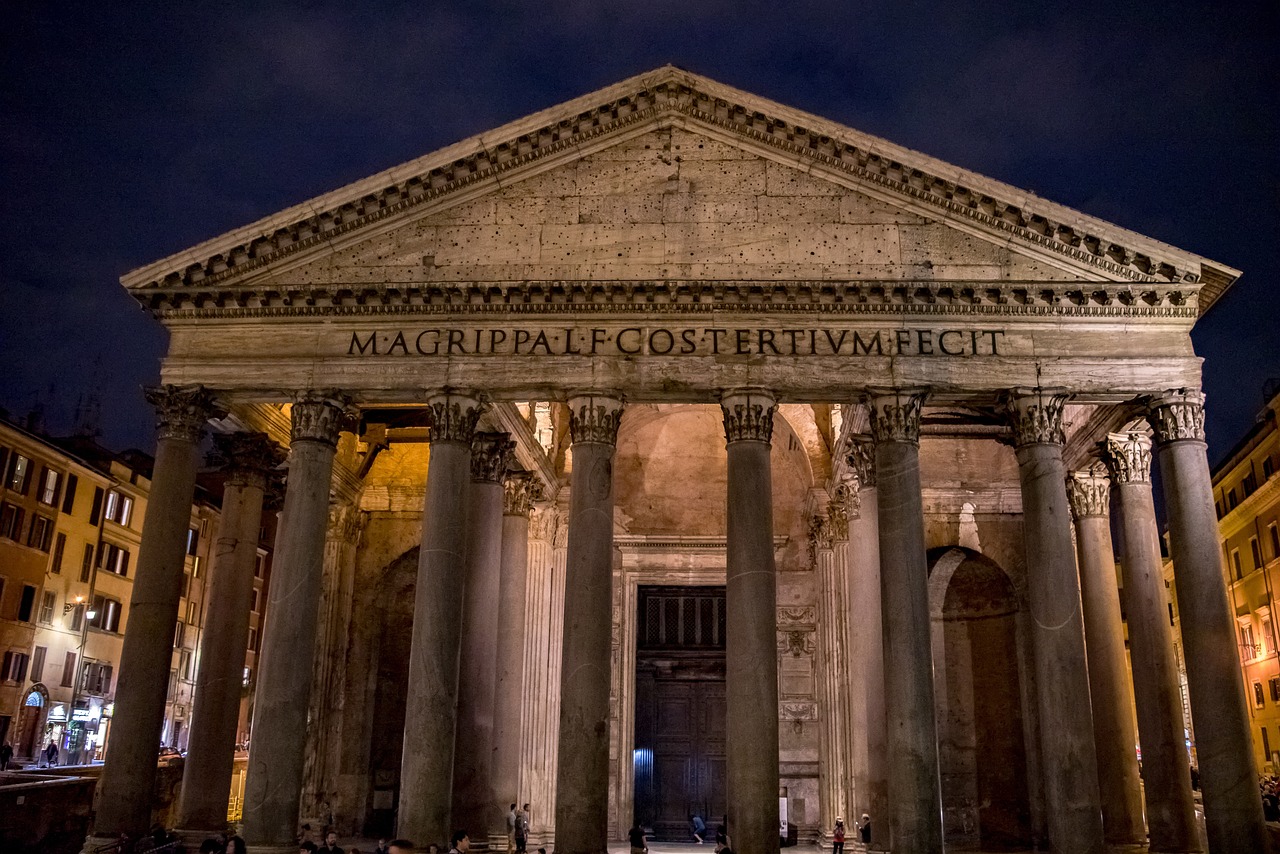The Pantheon stands as an iconic edifice in Rome, originally initiated in 27 BC by Marcus Vipsanius Agrippa. Initially conceived as a typical Classical temple—a rectangular structure topped with a gabled roof supported by an encircling colonnade—it underwent a complete renovation under Emperor Hadrian between AD 118 and 128. Subsequent modifications were made in the early 3rd century by Emperors Septimius Severus and Caracalla.
This remarkable circular structure is made of concrete clad in brick, featuring an imposing dome that rises from the walls. The entrance boasts a portico adorned with Corinthian columns that support a gabled roof crowned with a triangular pediment. Beneath the porch, remarkable bronze double doors, measuring 24 feet (7 meters) tall, mark some of the earliest significant examples of their kind.
The Pantheon is celebrated not just for its architectural grandeur, but also for its innovative construction techniques. The dome remains one of the largest of its kind, with a diameter of approximately 142 feet (43 meters) and a height of 71 feet (22 meters) at its apex. Internally, the dome lacks visible external brick arch supports, a mystery that has puzzled architects and historians alike. Nevertheless, two essential factors contributed to its enduring strength: superior quality mortar utilized in the concrete and the meticulous selection of aggregate materials. The foundation incorporates heavy basalt, transforming to brick and tufa in the lower wall sections, and finally to lightweight pumice toward the dome’s core. The upper third of the wall drum aligns with the dome’s lower part, using internal brick arches to manage structural forces. The walls, measuring 20 feet (6 meters) in thickness, are reinforced with substantial brick arches and piers stacked within.
While the façade adheres to traditional design principles, the inner space—a vast circular hall illuminated solely by the light streaming through the 27-foot (8-meter) oculus at the dome’s center—was groundbreaking. This emphasis on interior experience over exterior aesthetics may have set a precedent among ancient architecture. The exterior appears relatively simple, contrasting with a richly decorated interior featuring colored marble and seven prominent recesses, each framed by pairs of columns that emphasize the rotunda’s monumental scale. The ceiling is adorned with rectangular coffers, likely crafted under Severus, and once detailed with bronze rosettes and moldings.
Consecrated as the Church of Santa Maria Rotonda (or Santa Maria ad Martyres) in AD 609, the Pantheon retains this designation today. Over the centuries, many bronze features, including rosettes and moldings, have vanished, while an ornate stucco frieze was added beneath the dome during the late Renaissance. Remarkably, the Pantheon has maintained its original shape and form, inspiring countless architects since the Renaissance.



